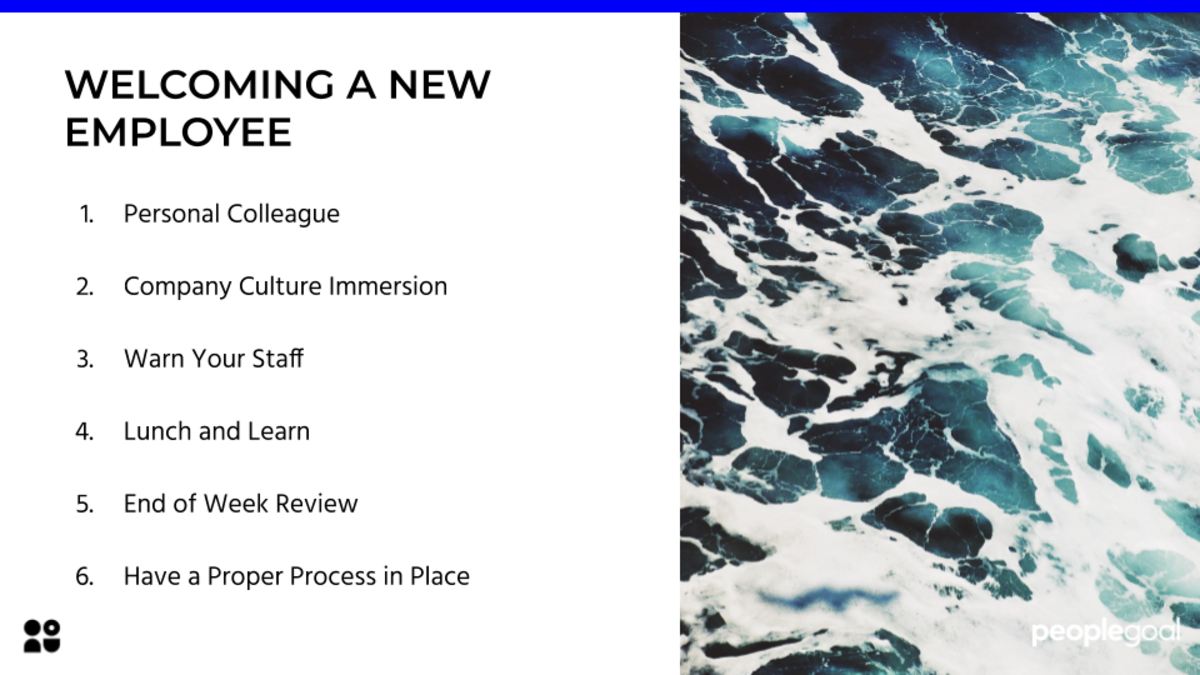Most employees decide whether or not to stay at a company within the first 10 days. Ouchh!!! Yeah, and that’s why offering a great onboarding experience isn’t optional anymore.
No wonder the organizations seek a perfect new hire checklist that can make the process easier.
In fact, after helping teams build over 500 onboarding programs and analyzing data from thousands of new hires, I’ve seen how a single checklist can turn first days into long-term success stories.
Let me help you in structuring your list
In this blog, you’ll learn:
- What to include in a new hire onboarding checklist
- How to structure it for day one to day ninety
- How to adapt it for remote teams
Additionally, I have included a quick, downloadable checklist that you can use to your advantage. Let’s begin with the fundamentals.
What Is a New Hire Checklist for Employees?
A new hire checklist for employees is a structured document that outlines every step needed to onboard new team members efficiently. It ensures that HR, IT, and department managers complete critical tasks, from collecting new hire paperwork to setting up accounts, equipment, and training.
A comprehensive employee onboarding checklist eliminates guesswork and ensures that no stage of the onboarding process is overlooked.
Whether for remote, hybrid, or office-based roles, it creates consistency, helps employees feel prepared, and reflects your company’s culture of organization and care right from the first day of work.
What Should Be Included in a New Hire Checklist?

A complete new hire onboarding checklist should go beyond a few administrative tasks. It’s a structured roadmap that ensures your new employees have everything they need to start confidently and perform effectively.
Each step contributes to a smoother transition, minimizes confusion, and helps new hires integrate into your systems and culture. Let’s break down the essential components every organization should include.
1. HR and Paperwork
The logistics come first. Before your new hire even walks through the door or logs in remotely, HR must ensure that the documentation process is airtight. A clear new hire paperwork checklist for HR professionals can help prevent compliance issues and payment delays.
Tasks to include:
- Signed employment offer or agreement
- Completion of tax forms
- NDA or confidentiality agreements
- Benefits enrollment and direct deposit forms
- Verification of identity and background checks
Without these elements handled early, your onboarding day can quickly turn into a scramble of missing forms and misplaced files. Getting HR tasks out of the way first creates a smooth foundation for the rest of the onboarding process.
2. IT and Equipment Setup
A vital section in any IT onboarding checklist for new hires, this stage ensures that your employees can hit the ground running. Technical readiness can make or break the first week. Whether the hire is in-office or remote, the IT setup must be prioritized before Day One.
Tasks to include:
- Laptop and essential peripherals (headset, mouse, etc.)
- Access credentials for company email and internal systems
- Calendar setup with scheduled onboarding meetings
- VPN or cybersecurity credentials for secure logins
- Set up communication tools like Slack, Teams, or Zoom
A hiring manager once said, “Nothing kills momentum like waiting two days for email access. We learned to frontload everything on the checklist.”
This proactive mindset ensures new hires start with full access and no unnecessary delays.
3. Training and Performance Framework
Onboarding isn’t just about orientation; it’s the beginning of skill development. A structured new hire training plan outlines the exact path a new employee will take to reach full productivity.
This phase should include:
- Internal process documents and training modules
- Tutorials for job-specific tools and software
- Role shadowing sessions and process walkthroughs
- Clear short-term KPIs and learning objectives
- Regular feedback checkpoints during the first 90 days
The idea is not to overwhelm new hires with everything at once, but to guide them through a paced progression. When they understand their milestones and expectations early, confidence builds naturally.
4. Culture and Integration
Beyond tools and tasks, onboarding is about connection. New hires need to feel welcomed and valued, not just assigned work. This part of your employee onboarding checklist ensures cultural alignment and belonging.
Include activities such as:
- A personalized welcome message or video from leadership
- A team introduction session, virtual or in-person
- Assigning a peer buddy or mentor for informal guidance
- Inviting them to social events, chats, or community channels
- Sharing company mission, values, and traditions
One HR director summarized it perfectly: “You can’t automate culture, but you can design for it.”
By embedding culture-focused elements into your onboarding checklist for new hires, you show that the company values people, not just productivity.
How to Structure the New Hire Process: Day 1-90
Creating a strong new hire onboarding checklist is not just about organization—it’s about timing. When the onboarding process unfolds in well-defined stages, employees gain clarity, confidence, and momentum.
A phased structure also prevents overwhelm and helps managers pace each step in a way that builds engagement and understanding from the start.
Here’s how to structure the onboarding process from pre-boarding to the first 90 days for lasting success.
Step 1: Pre-boarding — The Week Before Start
Preparation starts long before Day One. A detailed pre-boarding stage ensures logistics, paperwork, and access are ready, so the employee’s first day feels smooth and professional. Done right, this phase removes 80% of potential friction.
Include the following actions in your pre-boarding checklist for new hires:
- Send a welcome email with clear details about reporting time, dress code, and first-day expectations.
- Provide digital copies of the employee handbook and company policies.
- Ship or prepare all necessary tech equipment, ensuring everything works before Day One.
- Collect any missing new hire paperwork, such as tax or identity verification forms.
- Introduce the employee to their onboarding buddy or mentor through email or chat.
One HR coordinator explained, “We now consider pre-boarding part of the hiring process itself. It’s the bridge between ‘You’re hired’ and ‘You’re here.’”
That bridge sets the tone for the entire employee onboarding checklist and shows the company values preparation and care.
Step 2: Day One — Orientation Without the Overload
Day One should feel welcoming, not overwhelming. A first day of work checklist keeps the day balanced between introductions, learning, and comfort.
Here’s what to include:
- Welcome the new hire personally and make introductions with key team members.
- Give an office tour or, for remote workers, a virtual workspace walkthrough.
- Confirm all IT access, communication tools, and logins are functioning.
- Conduct a short session on company history, mission, and culture.
- Allow time for questions and informal interaction with peers.
The goal is not to rush through presentations, but to make the new hire feel seen and supported. As one manager shared, “People remember how you made them feel on day one far more than what you explained.”
Step 3: Week One — Begin Work, Build Relationships
After orientation, the first week helps the new hire settle into their role, meet colleagues, and start contributing meaningfully. This stage expands your first day onboarding checklist into a practical, relationship-building plan.
Make sure to:
- Schedule short meetings with cross-functional partners to understand collaboration.
- Assign a small, low-pressure project or task to encourage early ownership.
- Arrange an informal lunch or coffee chat—virtual or in person.
- Discuss short-term objectives and clarify work expectations.
- Set daily or alternate-day check-ins with the manager or buddy to review progress.
Ask simple, open-ended questions such as “Is anything still unclear?” It’s often the easiest way to uncover potential issues early in the onboarding process.
Step 4: 30, 60, and 90 Days — Build Momentum and Mastery
Onboarding doesn’t end after the first week. A well-defined 30-60-90 day plan provides structure for continuous learning and performance alignment.
Here’s how to structure it:
- 30 Days: The employee understands internal tools, processes, and workflows. They complete basic tasks and start contributing to small projects.
- 60 Days: The employee begins handling responsibilities independently, participates in discussions, and aligns with their team’s objectives.
- 90 Days: They show measurable impact, engage confidently in company culture, and take part in a formal performance review.
Schedule feedback sessions at each milestone. These reviews help managers measure the effectiveness of the new hire onboarding checklist, address gaps, and celebrate progress.
As one HR leader advised, “Formal reviews at 30, 60, and 90 days aren’t just evaluations, they’re opportunities to refine our process and support growth.”
Sounds good?
Now this process is useful for those attending the workplace every single day. But what about the remote teams? Let’s understand this in the next section.
How to Create a Remote New Hire Checklist
Remote onboarding succeeds only when it is structured with intention and empathy. Unlike in-office onboarding, there are no hallway greetings, casual check-ins, or quick IT fixes. Every step must be planned, communicated, and documented.
A strong new hire checklist for remote employees provides structure to this process, covering logistics, communication, culture, and long-term integration.
Here’s a step-by-step process to make your employee onboarding checklist effective for remote teams.
Step 1: Prepare Everything Before the Start Date
A smooth onboarding begins days before the new hire logs in. Ship equipment early, confirm tool access, and share digital new hire paperwork. Ensure that all logins, VPN credentials, and IT permissions work correctly.
When preparation is complete before Day One, the experience feels professional, not improvised.
Step 2: Create a Structured and Welcoming First Day
The first day defines the tone of remote work. Start with a warm welcome call from the manager and a short digital orientation covering company history, vision, and culture. Confirm that the IT onboarding checklist for new hires has been fully completed so they can start exploring tools and systems confidently.
The day should feel planned yet personal, ending with a clear overview of what the rest of the week looks like.
Step 3: Assign a Remote Onboarding Buddy
Remote employees need someone they can rely on for small questions and informal help. Assigning an onboarding buddy ensures a steady support system during the first few weeks.
As one remote developer put it, “I didn’t miss the office. I missed knowing who to ask for help. The buddy system filled that gap.” This human connection transforms your onboarding checklist for new hires into an experience of inclusion, not isolation.
Step 4: Clarify Communication and Workflow Norms
Miscommunication can derail remote onboarding. The new hire onboarding checklist should clearly define how the team communicates and collaborates. Explain what each channel is for: chat for quick updates, email for formal matters, and video calls for detailed discussions.
Outline time zone expectations, meeting schedules, and response norms. This clarity builds trust and prevents confusion in distributed teams.
Step 5: Integrate Training and Ongoing Support
Learning should follow a defined path, not trial and error. Include a new hire training plan that outlines what to learn, how to access materials, and who to contact for help.
Pair this with accessible IT support for troubleshooting. A structured plan shows the company values growth and helps the employee build competence at a comfortable pace.
Step 6: Reinforce Culture and Connection Digitally
Remote onboarding must extend beyond tools and tasks; it should communicate belonging. Use digital touchpoints to share your company’s story and culture. Encourage participation in virtual team meetings, informal coffee sessions, or community channels.
A brief welcome video from leadership or a team chat introduction helps bridge distance. A thoughtful employee onboarding checklist reminds every remote hire that they’re not just working from afar—they’re part of the team from day one.
Why Every Business Needs a New Hire Checklist

The onboarding process is often viewed as an HR formality, but in truth, it’s the foundation of every successful employment relationship. A new hire checklist transforms what could be an improvised, inconsistent experience into a structured and repeatable process that saves time, builds confidence, and strengthens engagement from day one.
When organizations overlook this step, the result is usually confusion, lost productivity, and early attrition.
In contrast, companies that use a defined employee onboarding checklist benefit from smoother coordination between HR, IT, and department heads, ensuring that every task, from new hire paperwork to first-week introductions, is handled with precision.
A recent report found that businesses with a structured onboarding system enjoy:
- 50% higher employee retention, because new hires feel welcomed and supported.
- 62% greater productivity, since expectations, tools, and training are clearly defined.
- Fewer administrative errors due to organized HR onboarding checklists that prevent compliance gaps.
Think about it. Retention isn’t just a reflection of good culture—it begins with preparation and a sense of readiness.
I asked a senior HR advisor at a remote-first SaaS company what changed after they implemented a new employee onboarding checklist. She said, “Before the checklist, onboarding felt like we were winging it. After we formalized the process, new hires settled faster and asked fewer logistical questions.”
Employees echo this sentiment as well. One developer shared, “I didn’t feel like an outsider on my first day because the structure made it feel like I was expected. That’s rare.”
Sounds good?
Now, let me give you a full checklist to help you create a structured, repeatable, and welcoming onboarding experience that leaves no step overlooked, whether your new hire is joining in person or remotely.
New Hire Checklist for In-Office, Hybrid & Remote Teams
Download this comprehensive employee onboarding checklist that covers every stage of the process, from pre-boarding to the 90-day mark. Use it to coordinate between HR, IT, and department heads, ensuring that every new hire begins their journey with confidence and clarity.
Turn Your New-Hire Checklist Into a Winning First-Day Experience
While we wrap this up, it’s important to note that a good new hire checklist is more than paperwork; it’s your first chance to show new employees that they’ve joined a team that’s ready for them.
It keeps HR organized, managers prepared, and new hires confident from day one. With a clear employee onboarding checklist, you avoid confusion, build connection, and set the tone for a long, productive journey.And if you really want to make it easy, use a good HR & onboarding software that does the heavy lifting for you. It can send reminders, track progress, share documents, and bring the whole process together in one place, so every new hire starts strong, stays engaged, and feels right at home from the very first login.
Ready to 3x Your Teams' Performance?
Use the best performance management software to align goals, track progress, and boost employee engagement.







